[ad_1]
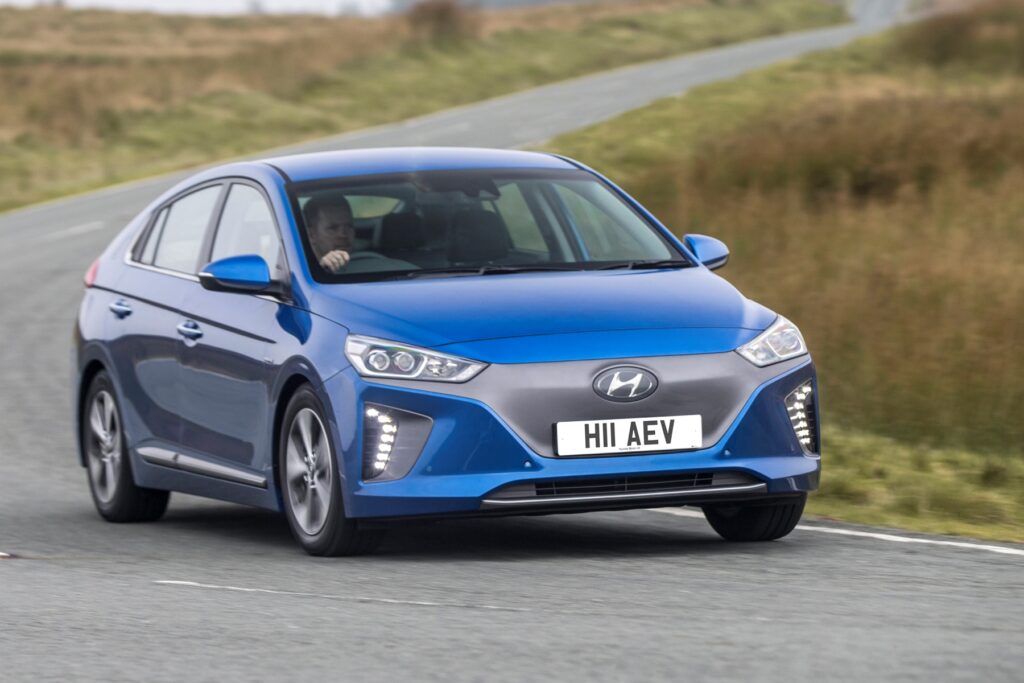
The pace of change in the auto industry has been palpable since “Dieselgate”. Suddenly, ultra low and zero emissions are intended in all the play plans of the manufacturers.
Hyundai was ahead of the curve and is first with a new breed of ÖKO cars from the box – one that can meet for every taste.
Meet the brand new Hyundai Ioniq-Das first car, which is available as an electrical, plug-in hybrid or hybrid.
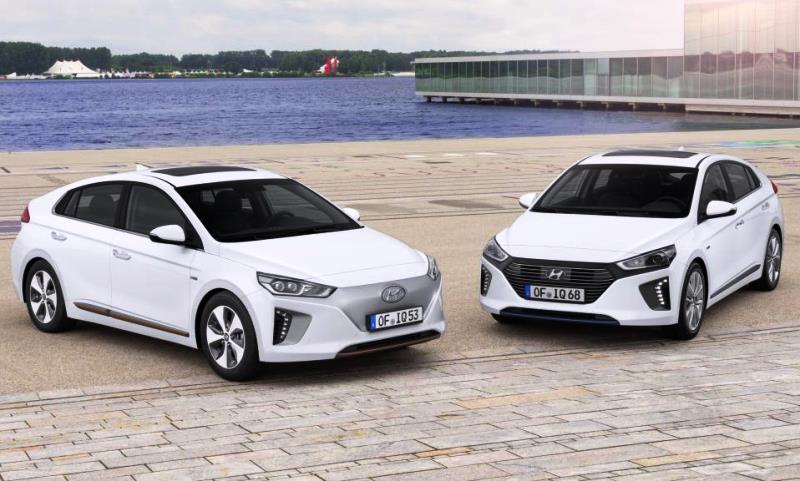
Those who are ready to say goodbye to the combustion engine can choose the 100% electrical version, while others can immerse themselves in the brave new world.
Next year a PHEV or plug-in hybrid version will start-half a house for those who want the best of both worlds and are not yet ready for possible reach.
The Ioniq shares a platform with its cousin, the Kia Niro, which will also be available in three versions.
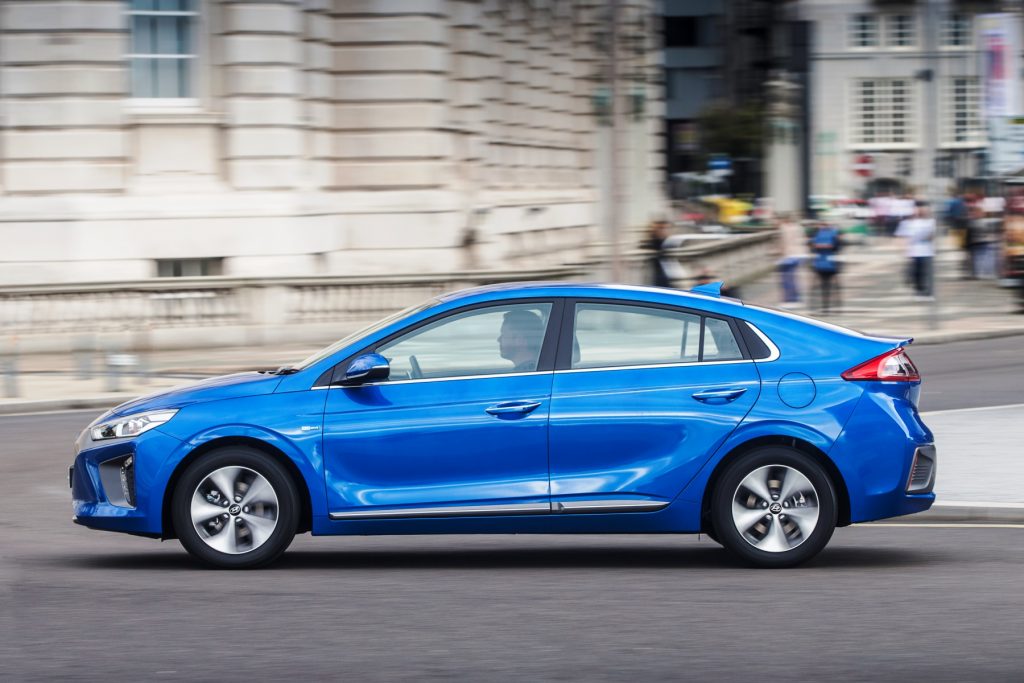
In contrast to the Niro Crossover, the IONIQ is a more conventional fluid rear, although it is also very slim with an air resistance coefficient of only 0.24.
The styling is more modern than futuristic, but it is not strange like some competitors. The back is dominated by a spoiler that is installed in the rear hatch, while the front cooler grille in the hybrid air flaps does not show less, which makes it particularly slippery.
The electrical version has no radiator grille at all because the engine does not have to cool down. Instead, there is only a smooth, carsey panel.
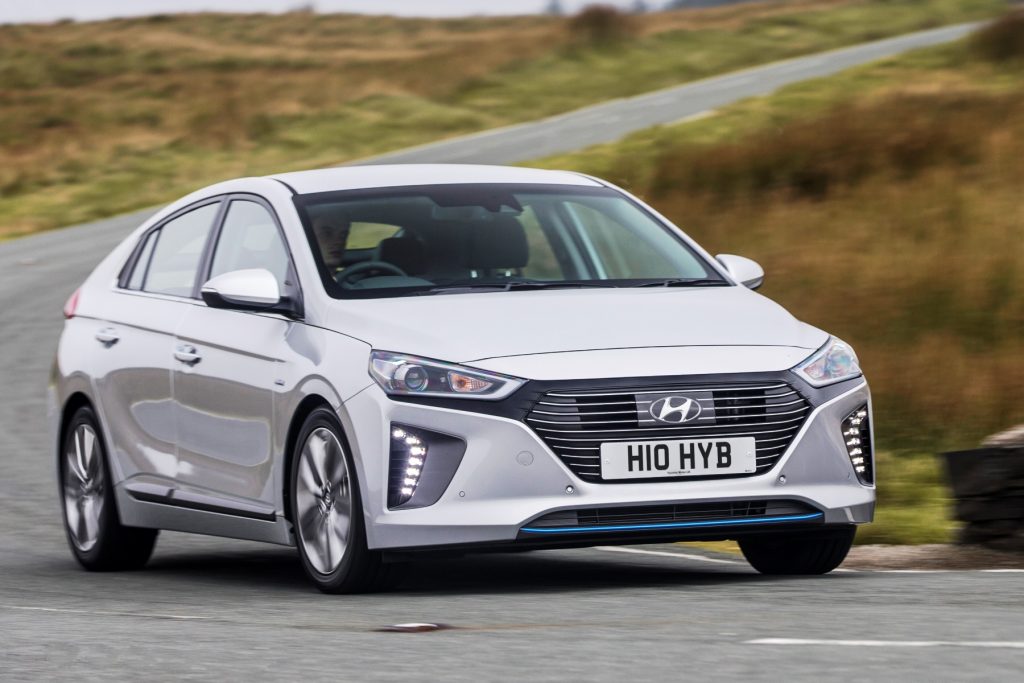
The most obvious rival of the Ioniq is the pioneering Toyota Prius – now in its fourth generation. But here is the thing – with the prices at 19,995 pounds for the hybrid, it is around £ 3,000 less than the Toyota. In other words, Hyundai has taken a huge step to provide the masses of hybrid technology.
The fully electric version costs from 24,495 GBP (including the state subsidy of £ 4,500), £ 1,500 cheaper than a Nissan Leaf. However, there will be no price for the plug-in hybrid next year, but it could be a game. Changing.
The IONIQ has an excellent Hyundai guarantee and eight years/125,000 miles from covering the high -voltage battery.
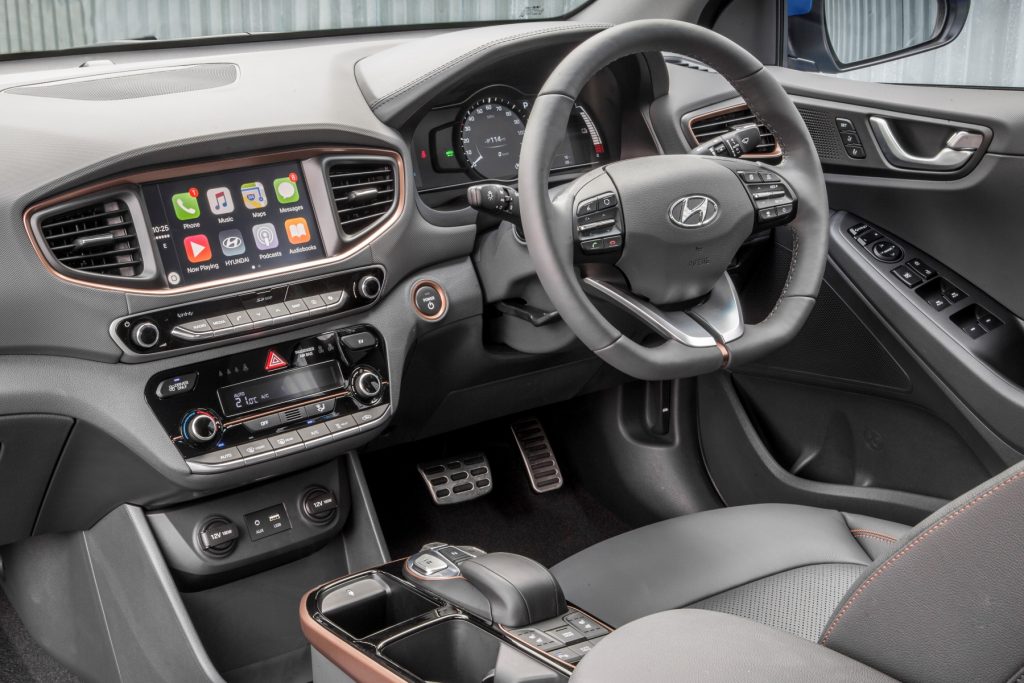
Inside there is space for a family of five. The legroom on the back is average and larger adults could fight for headroom due to the sloping roof line.
Nevertheless, the seats are comfortable and the dashboard and the center console are well laid out, with a solid look and feeling.
Hyundai claims that the Ioniq contains an “innovative use of recycled or ecologically sensitive materials”.
For example, the inside door covers are made of plastic, combined with wooden powder and volcanic stone. The headliner and the carpet contain raw materials made of sugar cane, while the color contains renewable ingredients from soybean oil.
The IONIQ, which is associated in refreshingly only a few equipment variants, is well equipped and there are many technology and driver aids.
Ioniq hybrid
A 105 hp 1 1.6-liter GDI petrol engine and 1.56 kWh lithium-ion polymer battery with electricity with 32 kW electromotor to increase performance and torque of the motor to 139 hp, and the CO2 emissions of 79 g/km and the fuel consumption of 83.1 Mpggemisions to the height of 79 g/km and the Increase fuel consumption of 83.1 MPGG. .
The hybrid drive is combined with a six-speed dual coupling automatic transmission that is close to a conventional car box.
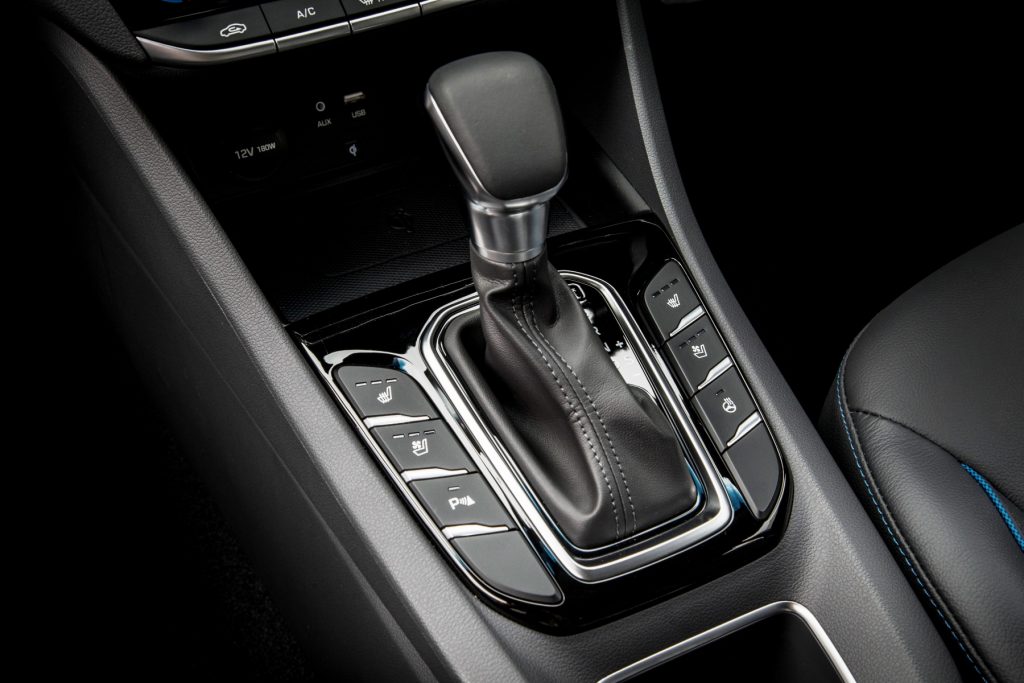
The system uses braking regeneration and surpluses of the engine power to load the battery, which then drives the engine. At very low speeds you can only drive electrically and only switch to harder acceleration or engine when maintaining higher speeds.
The Ioniq Hybrid is not a sports car. It is designed for efficiency, reaches 62 miles per hour in 10.8 seconds and leads to a top speed of 115 km / h.
The drive is leisurely and you will be fine, try to push it, and the engine will be more singing and the change of equipment lose your swampness.
During a mixture of city trips and country roads, we did 50 MPG, but I am sure that closer to 60 MPG is possible on the right kind of travel.
The journey is smooth enough, but don’t expect sharp handling if you are in a hurry. The impressive luggage compartment is also a mention of the depth, flat boots has a capacity of 550 liters.
Ioniq Electric
A 28 kWh lithium-ion polymer battery helps the electric motor with the pure electrical version of the Ioniq.
On paper it can be able to do 174 miles with a load and there are three driving modes – sports, normal and eco. The top speed is 103 km / h and the acceleration of 0-62 miles per hour is between 9.9 and 10.2 seconds, depending on your mode.
Apart from a treacherous light whining at low speeds, the IONIQ EV whispers calmly and feels lazy enough with a lot of reaction from the electric motor. Press the Sport button and there is a definitive power boost, but Eco will do it well.
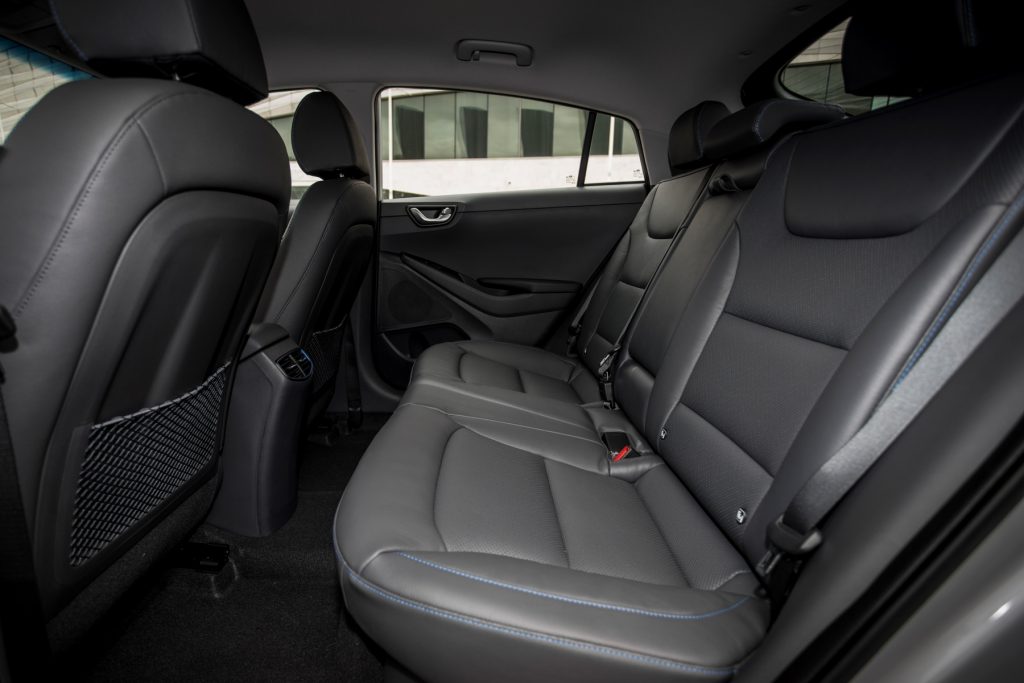
The brakes seem to be spongy at first, but this is not unusual with an electric car, as there are many clever technologies behind the scenes like regenerative brakes.
There are various standards of regenerative brakes and they are controlled via paddle on the steering column (similar to the Mitsubishi Outlander Phev).
Set it to the highest level and this slows down the car noticeably, but it is quite possible to find a happy medium. In fact, they will soon use the paddle as well as the brakes to slow down. And one thing is certain that it is very satisfactory to know that everything from braking to the overlay charges your battery again and increases its reach.
For me, the drive of the electros seems smoother and the handling is better than that of the hybrid, and of course it is also very quiet.

The car can be charged quickly to 80% in 33 minutes. From the network on a three-pin connector, a complete load takes 12 hours of empty or about 4-5 hours on a public fast charger.
It is not all good news that EV has less cardboard room than the (flat) capacity from 550 to 455 liters thanks to a larger battery.
Verdict: Respect for Hyundai. In three huge steps, the impressive IONIQ makes more environmentally friendly autoing more than ever.
[ad_2]
